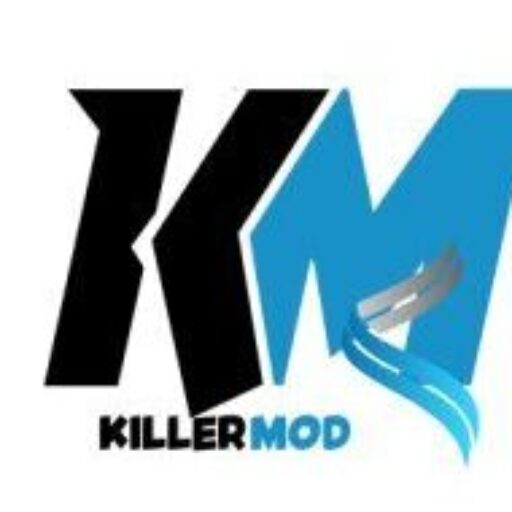In an age dominated by AI-generated content and fleeting social media trends, blogging remains a powerful medium for authentic storytelling, personal branding, and income generation. Whether you’re a passionate writer, a budding entrepreneur, or someone seeking a creative outlet, starting a blog in 2025 offers unparalleled opportunities to share your voice and connect with a global audience.

Introduction: Why Blogging Still Matters in 2025

This comprehensive guide will walk you through every step of launching a successful blog—from selecting the perfect niche and setting up your domain to choosing the right hosting platform and monetizing your content. Designed for beginners, this guide aims to make the process straightforward and achievable.
Step 1: Define Your Niche and Audience
Before diving into the technical aspects, it’s crucial to identify your blog’s focus. Your niche should align with your passions and expertise while also appealing to a specific audience. Popular niches in 2025 include personal development, sustainable living, tech reviews, and remote work lifestyle.
Tips for Choosing a Niche:
- Passion and Expertise: Select a topic you’re passionate about and knowledgeable in.
- Audience Demand: Research if there’s an audience interested in your chosen niche.
- Monetization Potential: Consider if the niche has products or services you can promote or sell.(Lifewire)
Step 2: Choose the Right Blogging Platform
Selecting the appropriate blogging platform is vital for your blog’s functionality and growth. In 2025, several platforms cater to different needs:
- WordPress.org: Highly customizable and ideal for those seeking full control.
- Wix: User-friendly with drag-and-drop features, suitable for beginners.
- Squarespace: Known for sleek designs, great for visual content.
- Medium: Focuses on writing and community engagement but offers limited customization.
- Substack: Perfect for newsletter-based blogs aiming for subscription models.(Odoo)
For those aiming to monetize and have full control, WordPress.org is often recommended. (Odoo)
Step 3: Secure Your Domain Name and Hosting
Domain Name
Your domain name is your blog’s address on the internet (e.g., www.yourblog.com). Tips for choosing a domain name:
- Keep it Short and Memorable: Aim for simplicity.
- Use Relevant Keywords: Incorporate words that reflect your niche.
- Avoid Numbers and Hyphens: These can be confusing and hard to remember.
- Choose the Right Extension: “.com” is standard, but others like “.blog” or “.net” can work.(The Blog Beginner)
Hosting
Hosting is where your blog’s data is stored. Reliable hosting ensures your site is fast and accessible. Top hosting providers in 2025:
- Bluehost: Great for beginners, offers one-click WordPress installation.
- SiteGround: Known for excellent customer support and speed.
- Hostinger: Affordable with solid performance.
- Kinsta: Premium hosting for high-traffic sites.(The Blog Beginner, Odoo)
Many hosting services offer a free domain for the first year. (The Blog Beginner)
Step 4: Install and Customize Your Blog
Once you’ve secured your domain and hosting, it’s time to set up your blog:
- Install WordPress: Most hosting providers offer easy, one-click installations.
- Choose a Theme: Select a design that suits your niche. Popular themes include Astra, OceanWP, and Divi.
- Install Essential Plugins: Enhance functionality with plugins like:
- Yoast SEO: Optimize your content for search engines.
- Jetpack: Provides security and performance enhancements.
- WP Super Cache: Improves site speed.
- Elementor: Drag-and-drop page builder for easy customization.(The Blog Beginner, Odoo)
Customize your blog’s appearance to reflect your brand and ensure it’s user-friendly.
Step 5: Create High-Quality Content
Content is the heart of your blog. To attract and retain readers:(GingerDomain)
- Understand Your Audience: Address their needs and interests.
- Maintain Consistency: Regular posting keeps your audience engaged.
- Use Visuals: Incorporate images, infographics, and videos to enhance engagement.
- Optimize for SEO: Use relevant keywords, meta descriptions, and alt tags.(GingerDomain)
Popular content formats include how-to guides, listicles, product reviews, and personal stories. (GingerDomain)
Step 6: Promote Your Blog
Creating great content isn’t enough; promotion is key to growing your audience:
- Social Media: Share your posts on platforms like Facebook, Twitter, Instagram, and LinkedIn.
- Email Marketing: Build a subscriber list to notify readers of new content.
- Engage with Other Bloggers: Comment on related blogs and participate in online communities.
- SEO Optimization: Ensure your content is discoverable through search engines.(PerfectMySite, Ahitechno)
Consistency in promotion helps build momentum and attract a loyal readership. (PerfectMySite)
Step 7: Monetize Your Blog
Once your blog gains traction, you can explore various monetization strategies:(GingerDomain)
- Affiliate Marketing: Promote products or services and earn a commission for each sale made through your referral links.
- Display Ads: Use networks like Google AdSense to display ads and earn revenue based on clicks or impressions.
- Digital Products: Sell ebooks, online courses, or printables.
- Sponsored Content: Collaborate with brands to create content promoting their products or services.
- Memberships: Offer exclusive content or perks to subscribers for a fee.(Reddit, Semrush)
Choose monetization methods that align with your content and audience interests. (Semrush)
Step 8: Maintain and Grow Your Blog
Blogging is an ongoing process. To ensure continued success:(Semrush)
- Update Content: Regularly refresh old posts to keep them relevant.
- Engage with Readers: Respond to comments and encourage feedback.
- Monitor Analytics: Use tools like Google Analytics to track performance and understand your audience.
- Stay Updated: Keep abreast of industry trends and adapt accordingly.(The Blog Beginner)
Consistency and adaptability are key to long-term blogging success.
Conclusion: Your Blogging Journey Begins Now
Starting a blog in 2025 is more accessible than ever. With the right tools, strategies, and dedication, you can create a platform that not only shares your voice with the world but also offers opportunities for personal and financial growth.
Remember, every successful blogger started with a single post. Stay consistent, keep learning, and don’t be afraid to evolve. Your unique perspective is valuable—share it with the world.
Happy blogging!
